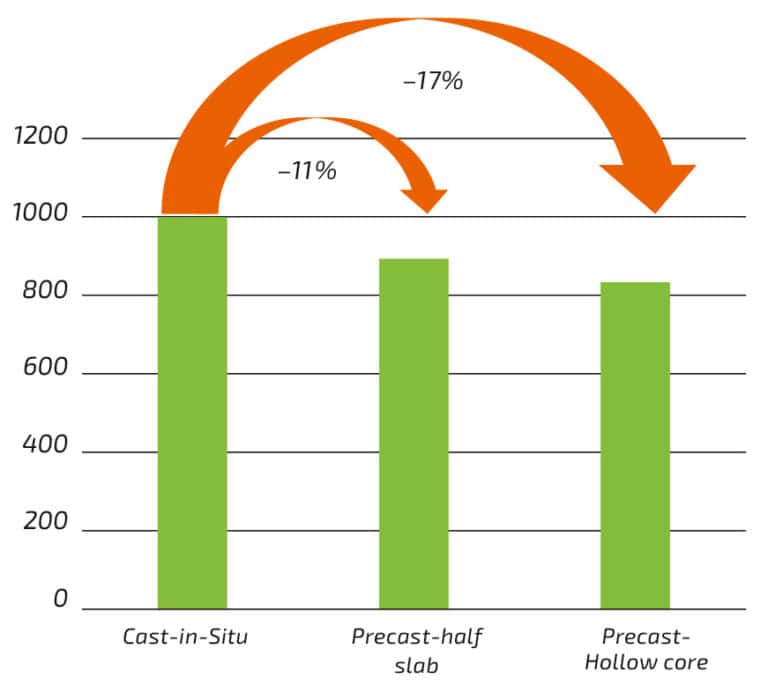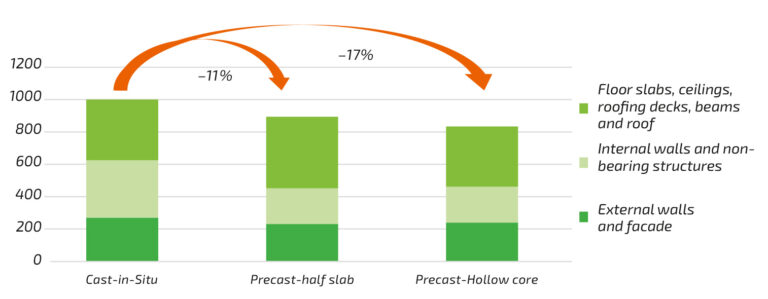Recent research by Wong & Loo: Sustainability implications of using precast concrete in construction: An in-depth project-level analysis spanning two decades analyzed 38 construction projects, their construction methodologies, and sustainability performance in Hong Kong from 1998 to 2022. The research examined whether the level of modularity increased in 20 years, and if modularity has had an impact on social, environmental, and economic sustainability. The research data was collected from construction companies’ projects. The information used for comparison covered the basic project details such as project number and gross floor area and the number of storeys, and facts such as total concrete volume, total prefabrication volume, total cast-in-situ volume, waste volume, total man days, accident rate, project cost, and carbon emissions were used in research evaluation.
The research concluded that construction methodologies and modularity are the determinants of sustainability on site, and that there were positive correlations between the percentage of prefabrication applied onsite and the sustainability attributes. In the research, prefabricated materials, including precast concrete, have shown a significant reduction in construction waste and operational costs. By replacing cast-in-situ concrete with precast, CO2 emissions decrease, and construction wastage is minimized. Improved safety and better building quality are also among the list of prefabricated construction benefits. Less used material and less time on site also mean savings in costs.
The Composite Sustainability Index (CSI), which combines environmental, social, and economic sustainability indices, reflects the positive correlation between construction modularity and sustainability. The higher the percentage of prefabrication, the better the overall CSI. There’s positive coefficiency between construction modularity and overall sustainability
Source: Wong & Loo, 2022. Sustainability implications of using precast concrete in construction: An in-depth project-level analysis spanning two decades. Journal of cleaner production


